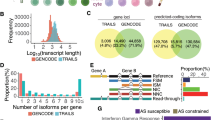Abstract
THE group-specific components (Gc) of human sera, described in 1959 by Hirschfeld1, constitute a system of α2-globulins varying in relative electrophoretic mobilities. Family studies disclosed that this system is controlled by two co-dominant autosomal alleles, Gc1 and Gc2 (refs. 2 and 3). Three common phenotypes can be distinguished by immunoelectrophoresis as indicated by the different position and shape of the Gc-precipitates: a fast-moving component (Gc 1–1), and a slow-moving component (Gc 2–2) correspond to the homozygous types; the heterozygous type is characterized by the presence of both components forming an extended, two-peaked precipitate (Gc 2–1). Population surveys have revealed considerable variations in the distribution of Gc allele frequencies in different geographical areas and ethnic groups. The frequencies of Gc2 varied from 0.306 in Indians (Bombay) to 0.023 in a population of Navajo Indians4,5. In the various Jewish populations in Israel the distribution of several genetic traits has been extensively investigated. Differences in the distribution of blood groups6, and incidence of erythrocyte glucose-6-phosphate dehydrogenase deficiency7, have been demonstrated. The differences demonstrated in the distribution of haptoglobins were not statistically significant. Significant differences in the taste sensitivity to phenylthiourea were found only in males. The present investigation is concerned with the distribution of the group specific components among various populations in Israel.
This is a preview of subscription content, access via your institution
Access options
Subscribe to this journal
Receive 51 print issues and online access
$199.00 per year
only $3.90 per issue
Buy this article
- Purchase on Springer Link
- Instant access to full article PDF
Prices may be subject to local taxes which are calculated during checkout
Similar content being viewed by others
References
Hirschfeld, J., Acta Pathol. Microbiol. Scand., 47, 160 (1959).
Hirschfeld, J., Jonsson, B., and Rasmuson, M., Nature, 185, 931 (1960).
Cleve, H., and Bearn, A. G., Ann. N.Y. Acad. Sci., 94, 218 (1961).
Cleve, H., and Bearn, A. G., in Progress in Medical Genetics, 2 (Grune and Stratton, New York) (in the press).
Hirschfeld, J., in Progr. Allergy, 6 (Karger, Basle and New York) (in the press).
Mourant, A. E., Kopec, A. C., and Domaniewski-Sobezak, K., The ABO Blood Groups: Comprehensive Tables and Maps of World Distribution (Blackwell Sci. Pub., Oxford, 1958).
Szeinberg, A., Sheba, C., and Adam, A., Blood, 13, 1043 (1958).
Scheidegger, J. J., Intern. Arch. Allergy App. Immunol., 7, 103 (1955).
Hirschfeld, J., Acta Pathol. Microbiol. Scand., 46, 224 (1959).
Author information
Authors and Affiliations
Rights and permissions
About this article
Cite this article
CLEVE, H., RAMOT, B. & BEARN, A. Distribution of the Serum Group-Specific Components in Israel. Nature 195, 86–87 (1962). https://doi.org/10.1038/195086a0
Issue Date:
DOI: https://doi.org/10.1038/195086a0
This article is cited by
-
The Group-Specific Component/Vitamin D Binding Protein (GC/DBP) in Jewish Population Groups. Distribution of common and rare alleles. Description of a new variant GC1C51
International Journal of Anthropology (1989)
-
Serum and tissue proteins in tuberous sclerosis
Humangenetik (1975)
-
Die gruppenspezifischen Komponenten (Gc) in paraproteinämischen Seren
Klinische Wochenschrift (1965)
-
Distribution of Serum Group-specific Components (Gc) in Afghanistan, Korean, Nigerian and Israeli Populations
Nature (1964)
-
Differences between the β-feto-protein of different individuals
Bulletin of Experimental Biology and Medicine (1964)
Comments
By submitting a comment you agree to abide by our Terms and Community Guidelines. If you find something abusive or that does not comply with our terms or guidelines please flag it as inappropriate.



